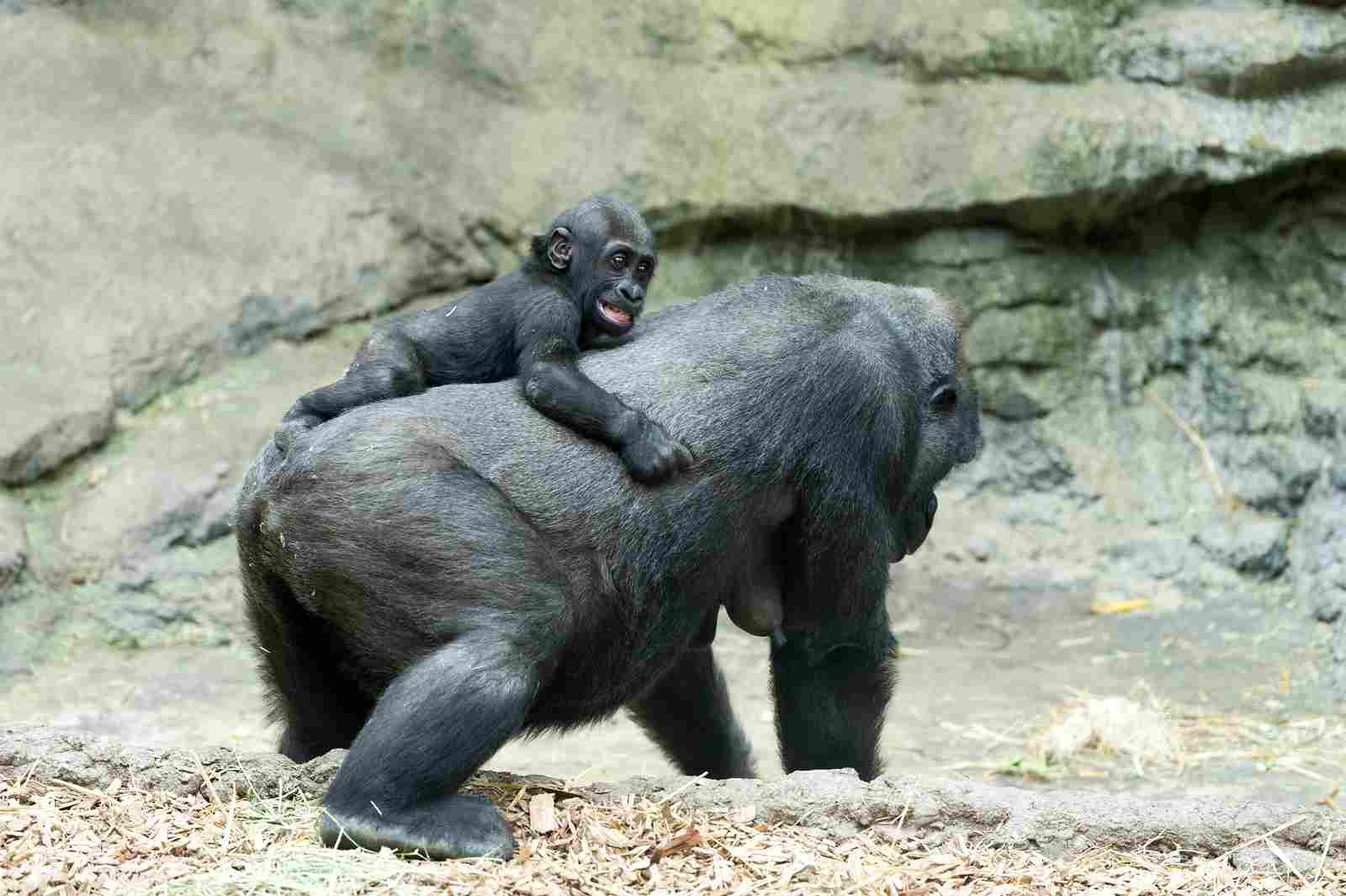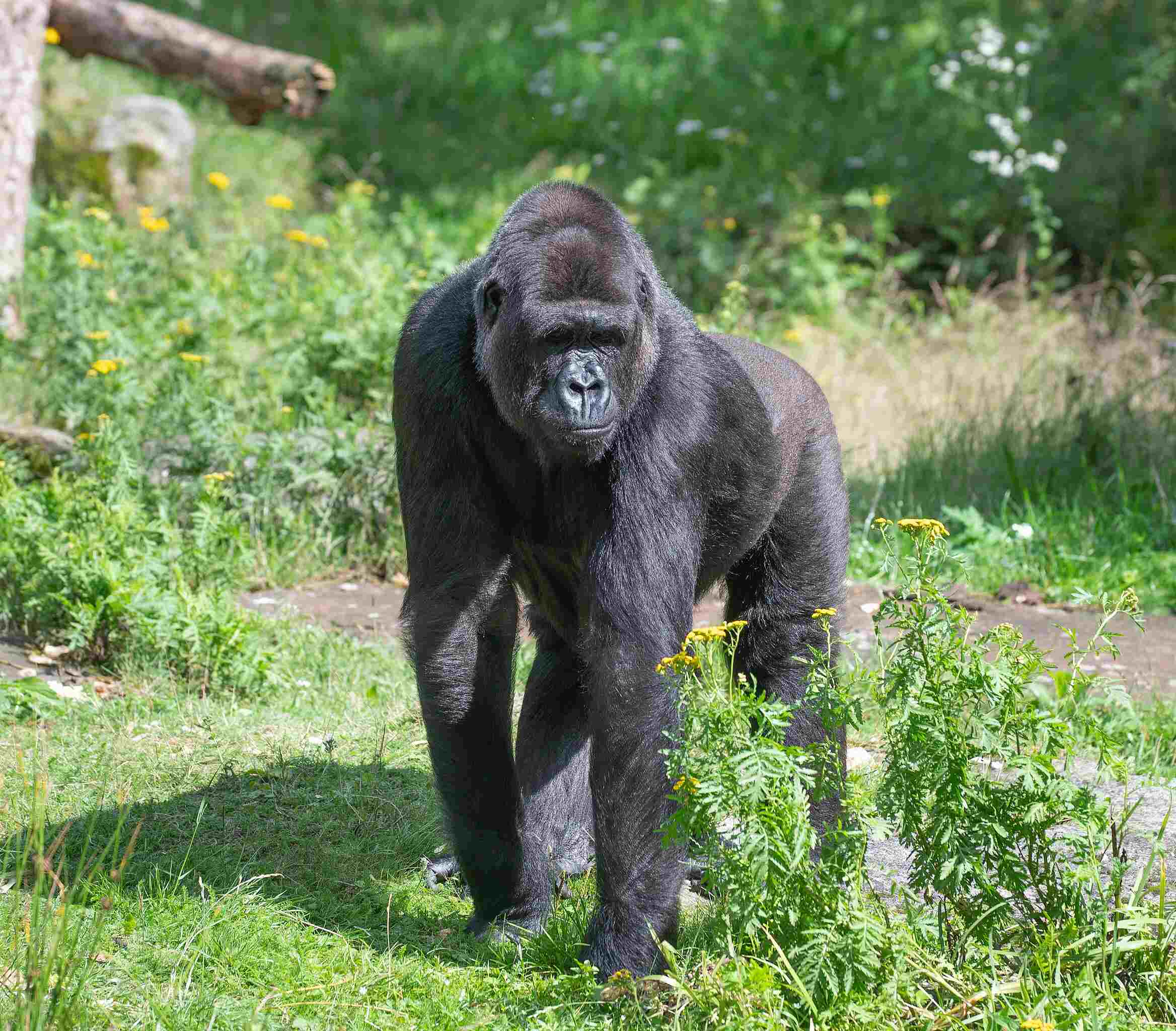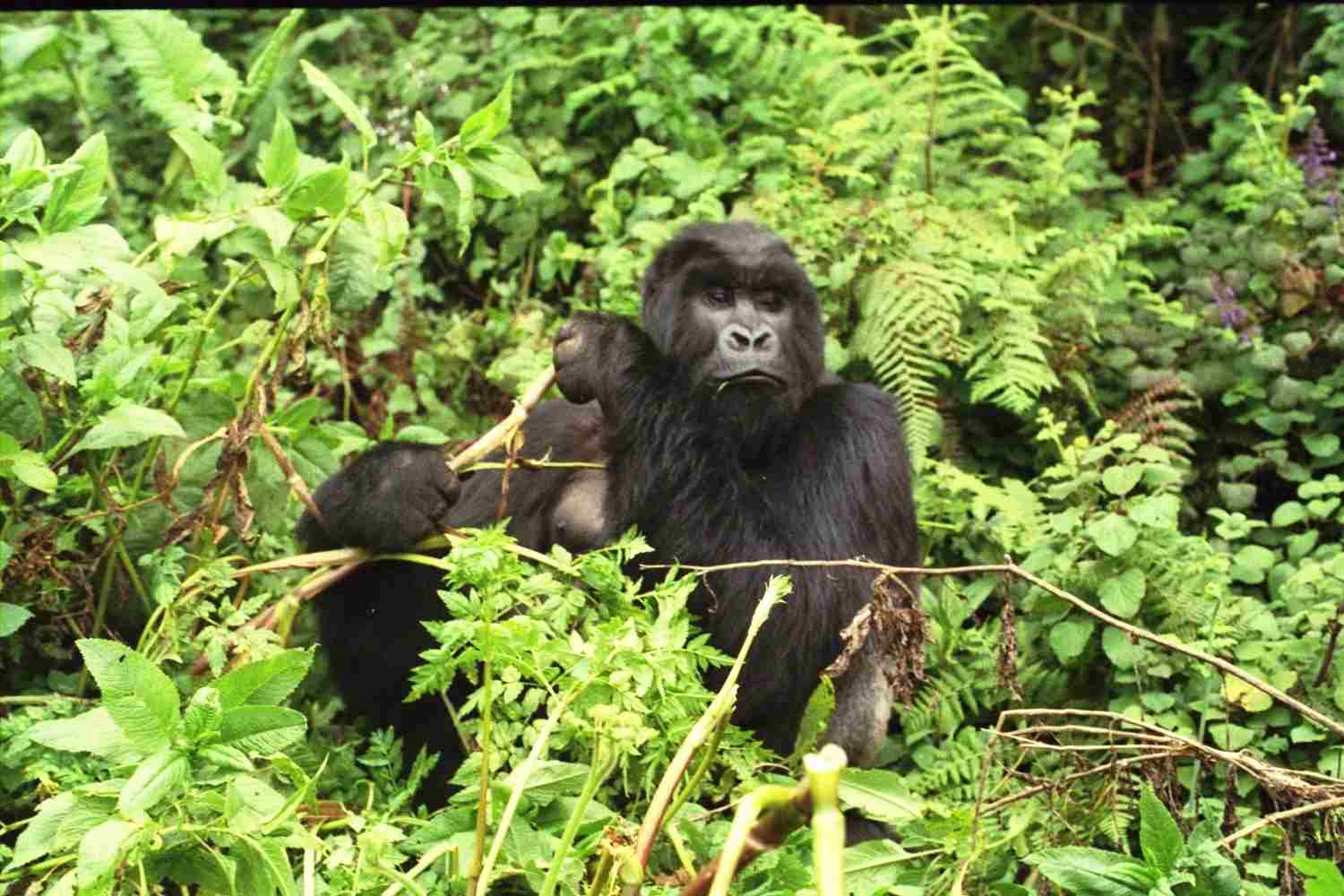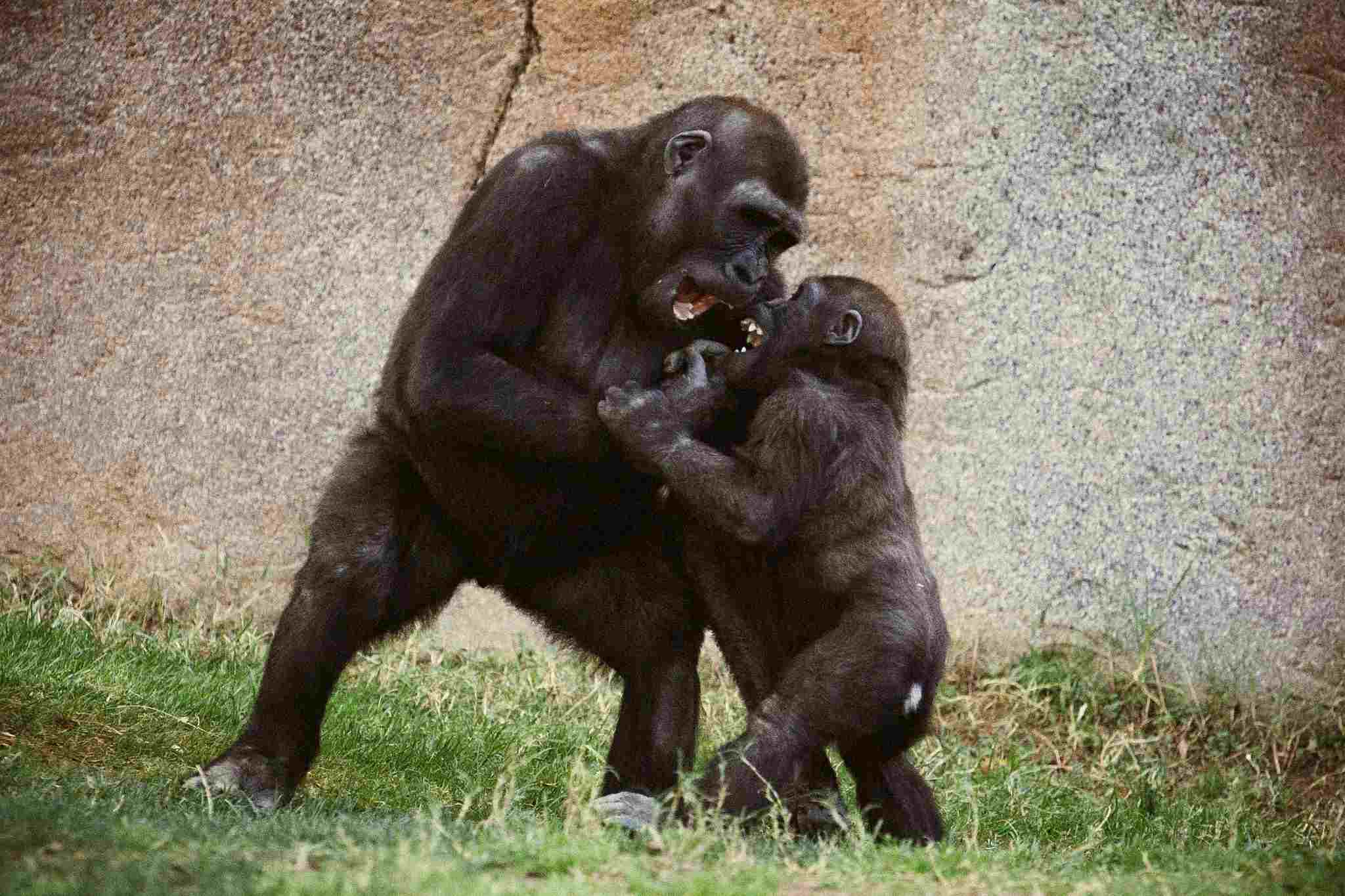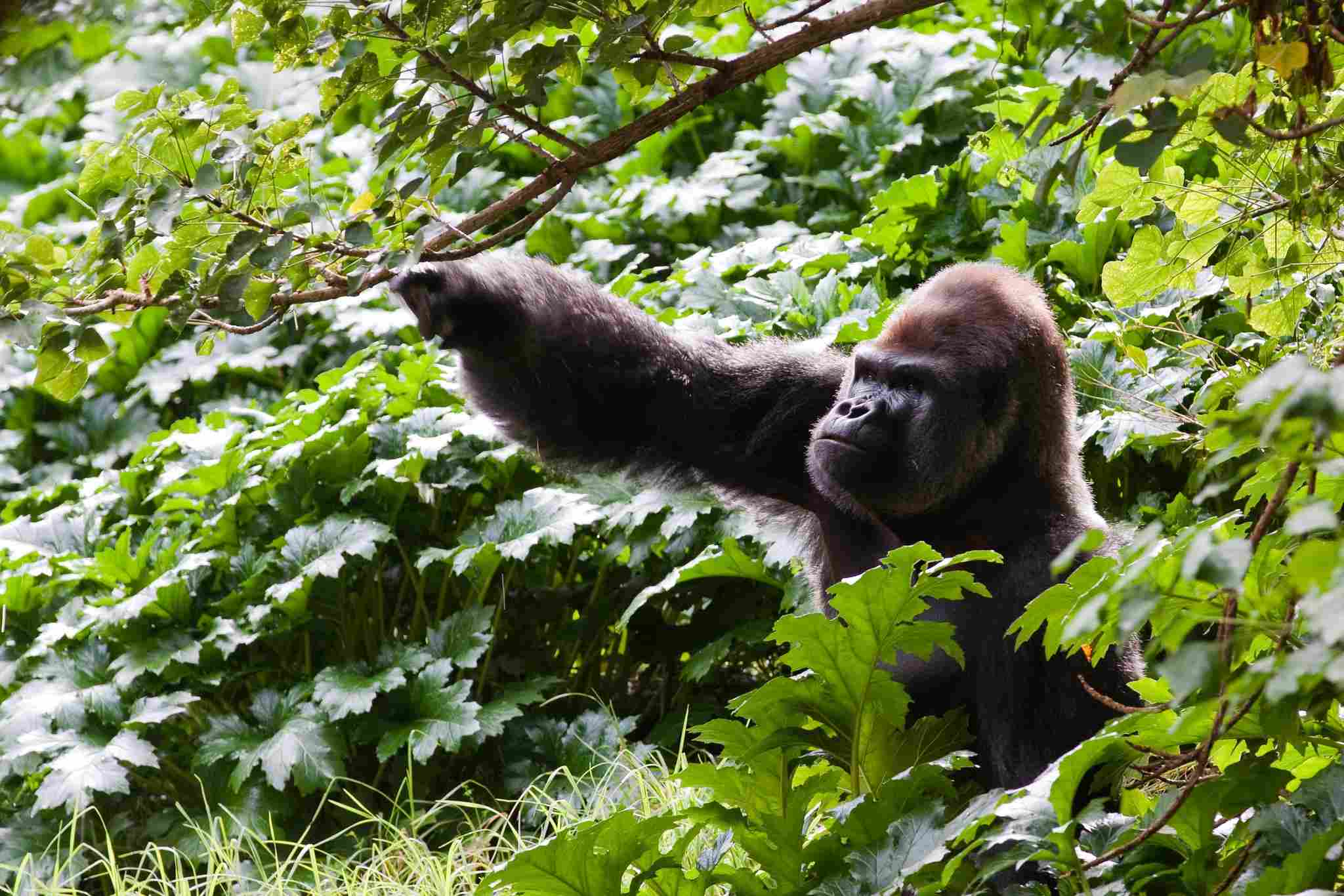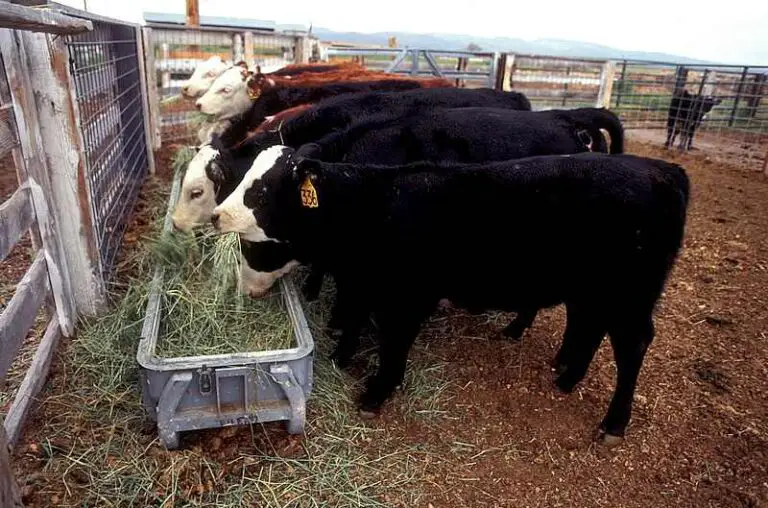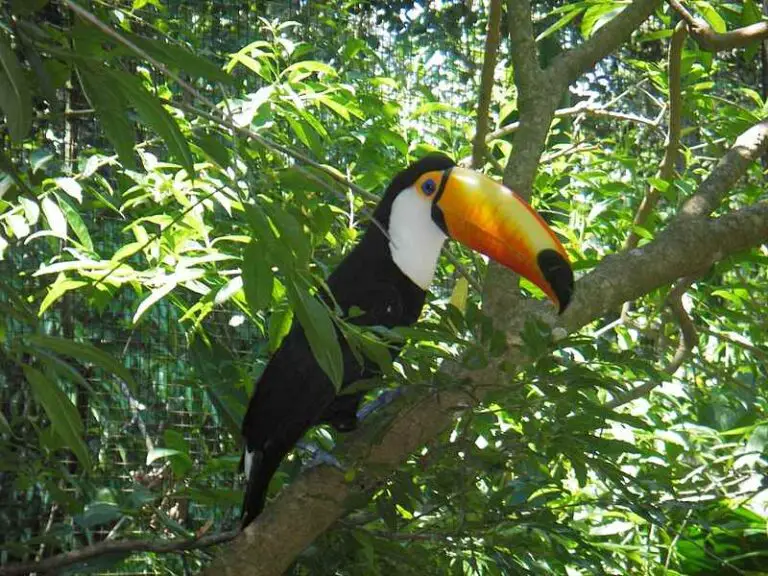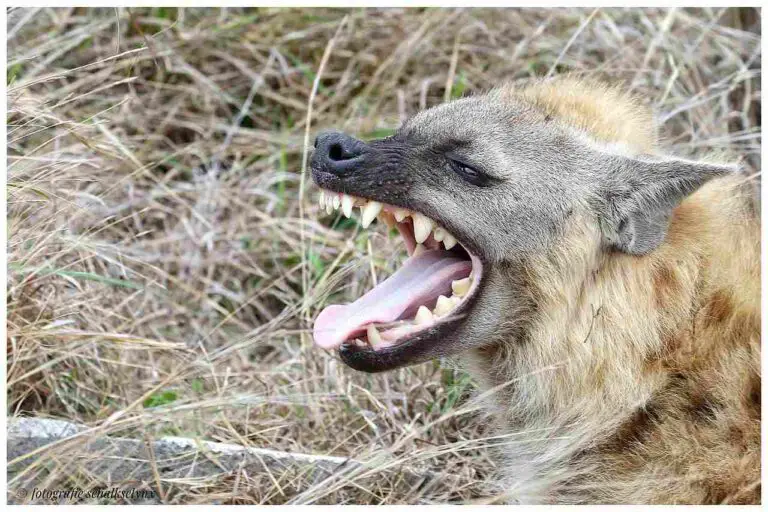Gorilla Vs Brown Bear Who Would Win, and Overall Comparison
Gorillas and brown bears, each representing strength in different ecosystems, showcase intriguing differences in biological and physical traits. Gorillas, thriving in dense forests, embody power within the primate family, while brown bears, as apex predators, dominate various habitats. This analysis explores taxonomy, appearance, size, weight, and predatory features to assess the potential outcome of a one-on-one confrontation between a gorilla and a brown bear.
Gorilla vs Brown Bear: Who Will Win in a Fight/Physical Confrontation?
In a one-on-one confrontation, a lone brown bear is likely to prevail over a solitary gorilla due to its superior size, greater weight, and formidable predatory features such as claws, teeth, and instincts.
I). Size and Weight Advantage:
– Brown bears, being significantly larger and heavier than gorillas, establish a considerable advantage in one-on-one confrontations, utilizing their size for dominance.
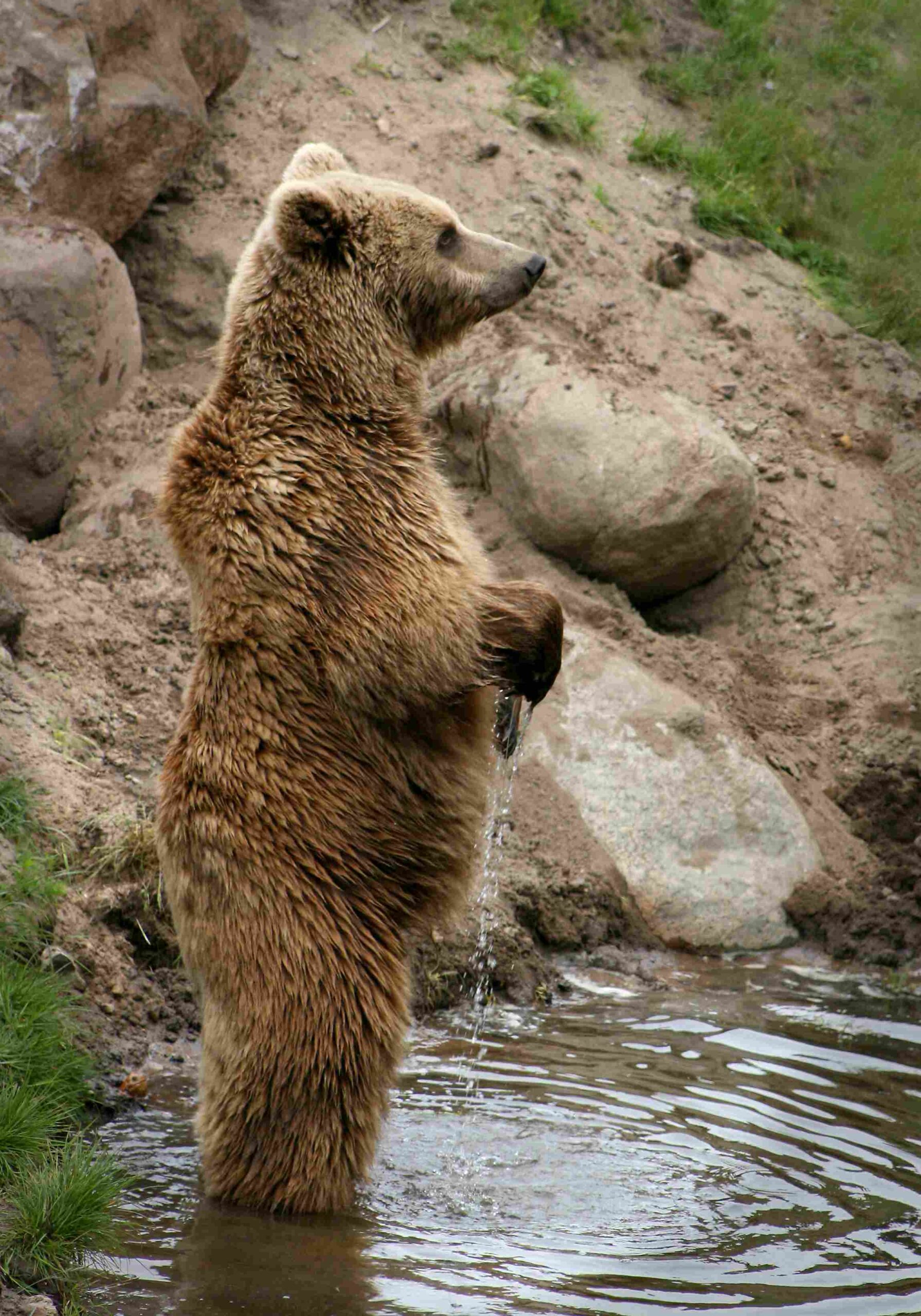
II). Predatory Features:
– Brown bears are equipped with formidable predatory features, including sharp claws and powerful teeth, enhancing their ability to subdue and overpower opponents.
III). Instincts:
– The predatory instincts of brown bears, honed by their role as apex predators, contribute to their effectiveness in confrontational scenarios, allowing them to assess threats and respond strategically.
While gorillas are strong, the sheer size and predatory adaptations of the brown bear give it a significant advantage.
*Details of Comparison
| Feature | Gorilla | Brown Bear |
| Taxonomy | – Order: Primates |
– Order: Carnivora
|
| – Family: Hominidae |
– Family: Ursidae
|
|
| – Genus: Gorilla | – Genus: Ursus | |
| – Species: G. beringei, G. gorilla (Eastern & Western gorillas) |
– Species: Ursus arctos (Various subspecies)
|
|
| Appearance | – Robust build, dark hair, sagittal crest (males) |
– Stocky build, varied fur colors, concave face
|
| Size | – Males: 5.6-5.9ft (standing height) |
– Varies by subspecies, Grizzlies: ~6.5ft
|
| Weight | – Males: 300-400lbs, Females: Smaller |
– Varies by subspecies, Grizzlies: 300-1500lbs
|
| Bite Force | – Estimated ~1300 psi |
– Strong, exact measurement varies
|
| Offensive Advantages | – Powerful arms, sharp canines |
– Strong forelimbs, sharp claws, good swimmers
|
| Defensive Advantages | – Physique, climbing ability |
– Robust build, standing on hind legs
|
| Speed | – ~20 mph (limited ground speed) | – Up to 30 mph |
| Agility | – Agile climbers, display agility socially |
– Agile for size, navigate varied terrains
|
| Capacity | – Ground and tree movement, strong muscles |
– Versatile, adept at swimming, digging
|
| Habitat | – Tropical and subtropical forests |
– Various habitats, adaptable
|
| Tracks | – Hand & footprints, opposable thumb visible |
– Large paw prints, distinct claw marks
|
| Lifespan | – 35-40 years in the wild |
– Varies (20-30 years), by species and habitat
|
| Feeding | – Primarily herbivorous, occasional insects |
– Omnivorous, opportunistic feeding
|
| Social Behavior | – Live in stable family groups |
– Generally solitary, social during mating
|
| Reproduction | – Polygynous mating, ~8.5 months gestation |
– Mating in spring, delayed implantation
|
| Parental Behavior | – Maternal care, silverback protection |
– Highly protective mothers, cubs stay for years
|
| Proximity to Humans | – Often remote areas |
– Various habitats, proximity to settlements
|
| Behavior Toward Humans | – Generally shy, defensive behavior |
– Responses vary, may approach or avoid
|
| Danger to Humans | – Rarely pose direct threat |
– Can pose a danger, especially if surprised
|
| Precautions | – Maintain respectful distance, follow guidelines |
– Carry bear spray, proper food storage
|
| Conservation Status | – Endangered (Eastern), Critically Endangered (Western) |
– Varies by subspecies, some populations least concern
|
| Ecological Implications | – Impact on rainforest biodiversity |
– Role in diverse habitats, potential conflicts
|
| Conclusion | – Both crucial for ecosystem balance |
– Conservation essential for both species
|
Key Points
Similarities:
-
- Both play vital roles in maintaining ecological balance.
- Conservation efforts crucial due to shared threats.
Differences:
-
- Gorillas are primates with a focus on social structures, adapted to African rainforests.
- Brown bears are versatile omnivores with a wide distribution, facing diverse challenges in different habitats, including human-bear conflicts.
1. Taxonomy
Gorilla:
Order: Primates
Family: Hominidae
Genus: Gorilla
Species: Gorilla beringei (Eastern gorilla), Gorilla gorilla (Western gorilla)
Brown Bear:
Order: Carnivora
Family: Ursidae
Genus: Ursus
Species: Ursus arctos (includes various subspecies)
Similarities
Both belong to the animal kingdom, chordata phylum, and mammalia class.
They are vertebrates and share common features like bilateral symmetry and warm-bloodedness.
2. Appearance
Gorilla:
Robust build with a broad chest and strong limbs.
Prominent sagittal crest on the skull in males.
Dark hair covering most of the body, with a bare face.
Distinctive noseprints are unique to each individual.
Brown Bear:
Stocky build with a hump on the shoulders.
Fur color varies (brown, black, blonde, or white).
Face has a distinctive concave appearance.
Claws are long and curved.
Ecological Implications:
Gorillas’ dark coloration aids in camouflage in dense forests.
Brown bears’ fur coloration may offer some camouflage, and the hump stores muscle mass for digging.
3. Size
Gorilla:
Adult males: 5.6 to 5.9 feet (standing height).
Adult females: Smaller than males.
Brown Bear:
Varies by subspecies.
Grizzly bears can stand 6.5 feet at the shoulder.
Ecological Implications:
Gorillas’ size adapts to arboreal life in forests, facilitating movement through trees.
Brown bears’ size aids in foraging and dominance in various habitats.
4. Weight
Gorilla:
Adult males: 300 to 400 pounds.
Adult females: Smaller than males.
Brown Bear:
Varies by subspecies.
Grizzly bears can weigh between 300 to 1,500 pounds.
Ecological Implications:
Gorillas’ weight supports their climbing and ground mobility.
Brown bears’ weight assists in digging for food and establishing dominance.
5. Bite Force
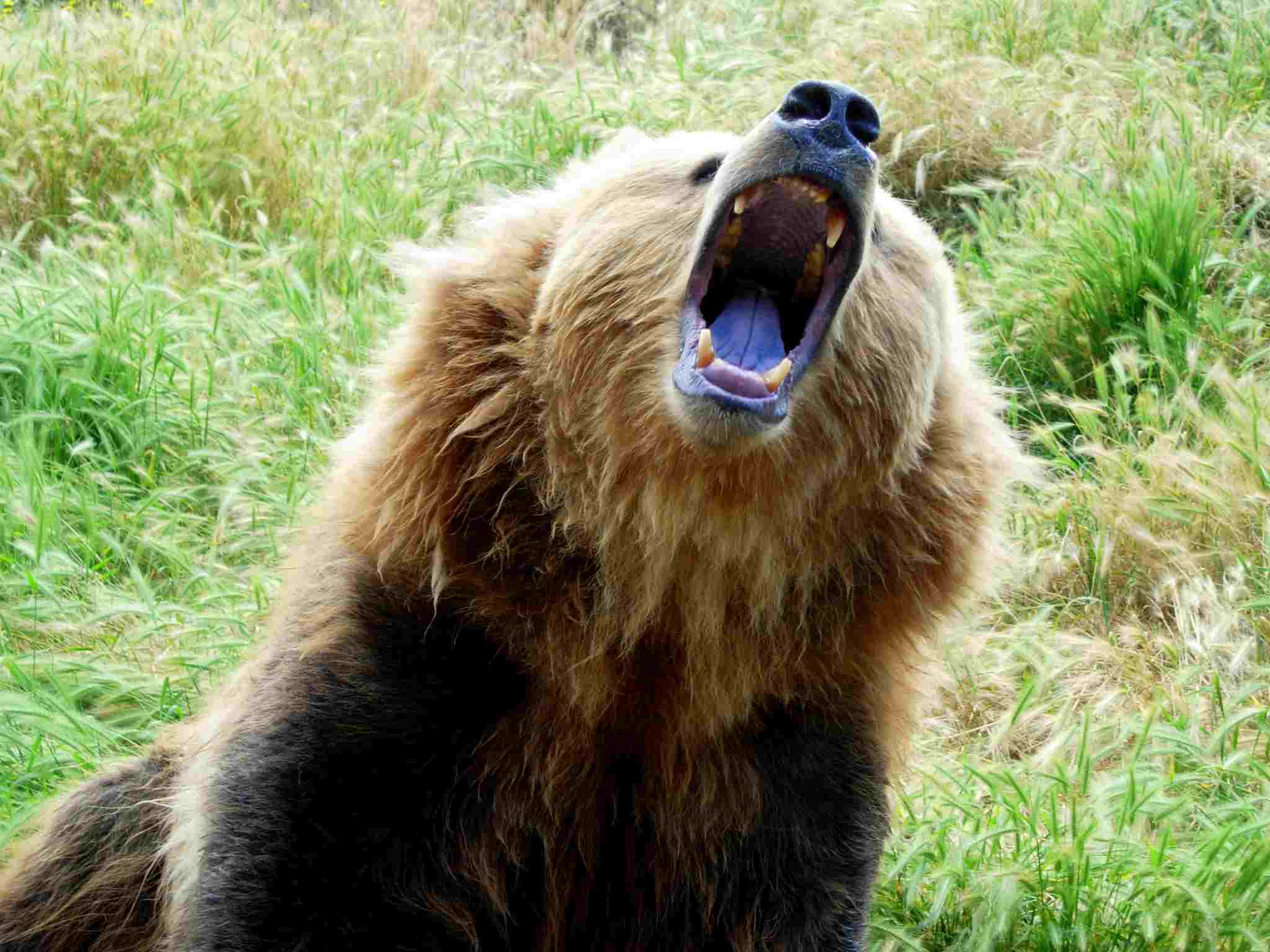
Gorilla:
Estimated to be around 1,300 psi (pounds per square inch).
Brown Bear:
Strong bite force; exact measurement varies.
Ecological Implications:
Gorillas use their bite for social communication and consumption of vegetation.
Brown bears utilize their powerful bite for hunting and consuming various prey items.
6. Physical Offensive Advantages
Gorilla:
Powerful arms and sharp canines.
Can use objects as tools for offense.
Brown Bear:
Strong forelimbs and sharp claws.
Excellent swimmers.
Ecological Implications:
Gorillas may use physical force for territorial disputes or protection.
Brown bears’ offensive capabilities aid in hunting and establishing dominance in their habitat.
7. Physical Defensive Advantages
Gorilla:
Powerful physique serves as a deterrent.
Agile and can climb trees for safety.
Brown Bear:
Robust build and powerful limbs.
Can stand on hind legs for intimidation.
Ecological Implications:
Gorillas’ defensive abilities help protect against predators.
Brown bears’ defenses are crucial for encounters with potential threats or competitors.
8. Speed
Gorilla:
Limited ground speed, approximately 20 miles per hour.
Brown Bear:
Surprisingly fast for their size, reaching speeds up to 30 miles per hour.
Ecological Implications:
Gorillas rely on agility more than speed for navigation in their habitat.
Brown bears’ speed aids in pursuits, whether for prey or to avoid threats.
9. Agility
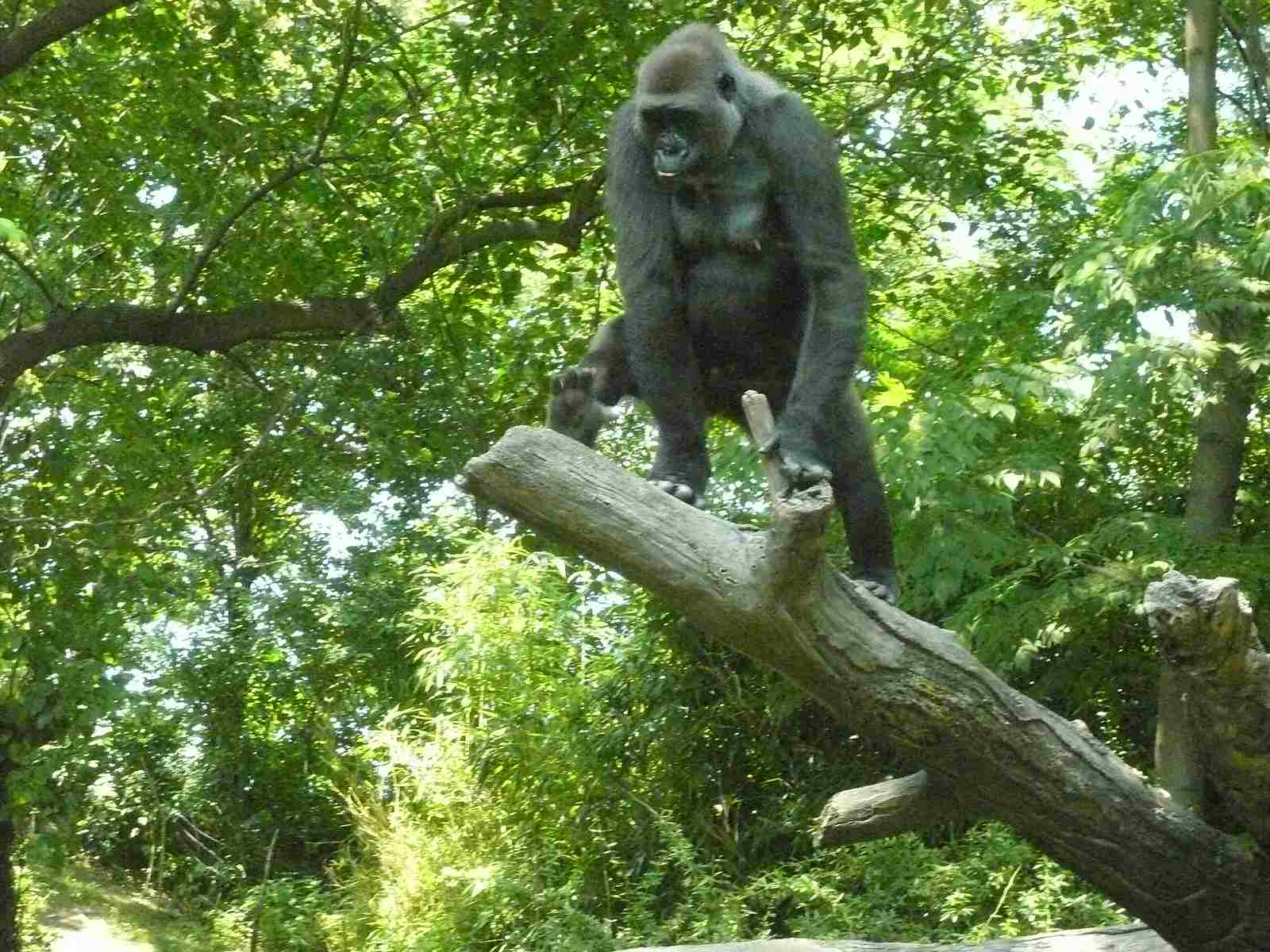
Gorilla:
Agile climbers and proficient at moving through trees.
Perform displays of agility in social interactions.
Brown Bear:
Agile for their size, able to navigate varied terrains.
Ecological Implications:
Gorillas’ agility is crucial for their arboreal lifestyle and social interactions.
Brown bears’ agility contributes to their ability to access different food sources and environments.
10. Overall Physical Capacity
Gorilla:
Adapted for both ground and tree movement.
Well-developed muscles for strength.
Brown Bear:
Versatile physical capabilities, adept at various activities such as swimming, digging, and climbing.
Ecological Implications:
Gorillas’ overall capacity allows them to navigate complex forest environments.
Brown bears’ versatility supports their survival in diverse habitats and foraging strategies.
11. Habitat Preference(s)
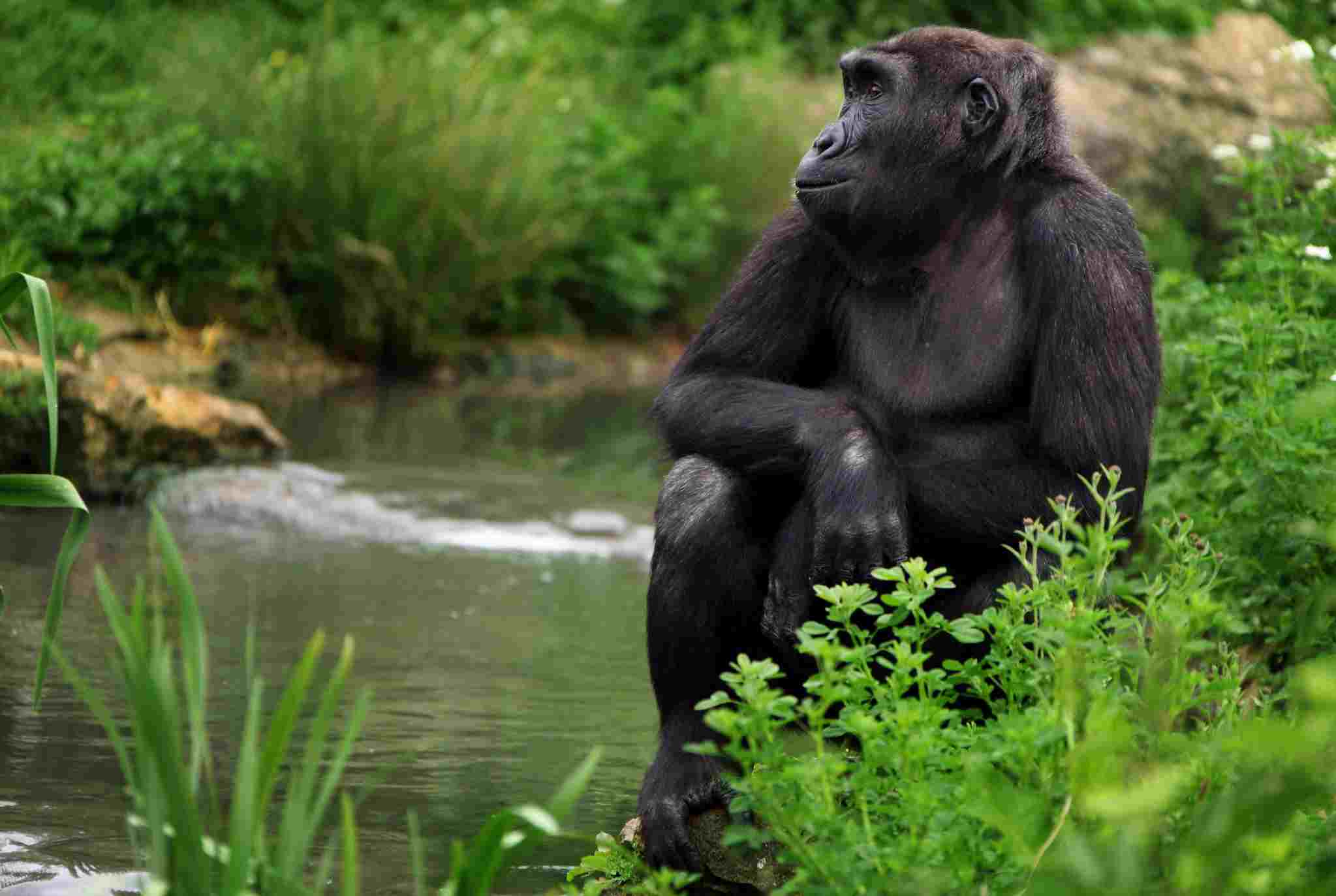
Gorilla:
Primarily inhabit tropical and subtropical forests.
Prefer areas with dense vegetation for cover.
Brown Bear:
Found in various habitats including forests, tundra, and mountains.
Adapt to different regions depending on the subspecies.
Ecological Implications:
Gorillas’ habitat preference aligns with their dietary and social needs in forested environments.
Brown bears’ adaptability to diverse habitats contributes to their wide distribution.
12. Tracks
Gorilla:
Distinctive hand and footprints.
Handprints show opposable thumb, characteristic of primates.
Brown Bear:
Large paw prints with distinct claw marks.
Hind footprints often show an elongated heel pad.
Ecological Implications:
Gorilla tracks reflect their arboreal and ground-based locomotion.
Brown bear tracks provide insights into their movement patterns and territorial behavior.
13. Lifespan
Gorilla:
35 to 40 years in the wild.
Captive gorillas may live longer.
Brown Bear:
Varies by species and habitat, ranging from 20 to 30 years.
Ecological Implications:
Gorillas’ lifespan influences their role in maintaining social structures within their communities.
Brown bears’ lifespan impacts their reproductive strategies and interactions within ecosystems.
14. Mode of Feeding
Gorilla:
Primarily herbivorous, with a diet consisting of fruits, leaves, and stems.
Occasionally consume insects.
Brown Bear:
Omnivorous, with a diet including berries, grasses, fish, and small mammals.
Opportunistic feeders, adapting to seasonal food availability.
Ecological Implications:
Gorillas contribute to seed dispersal and vegetation control in their habitat.
Brown bears’ varied diet plays a role in shaping plant and animal communities within their ecosystems.
15. Social Behavior
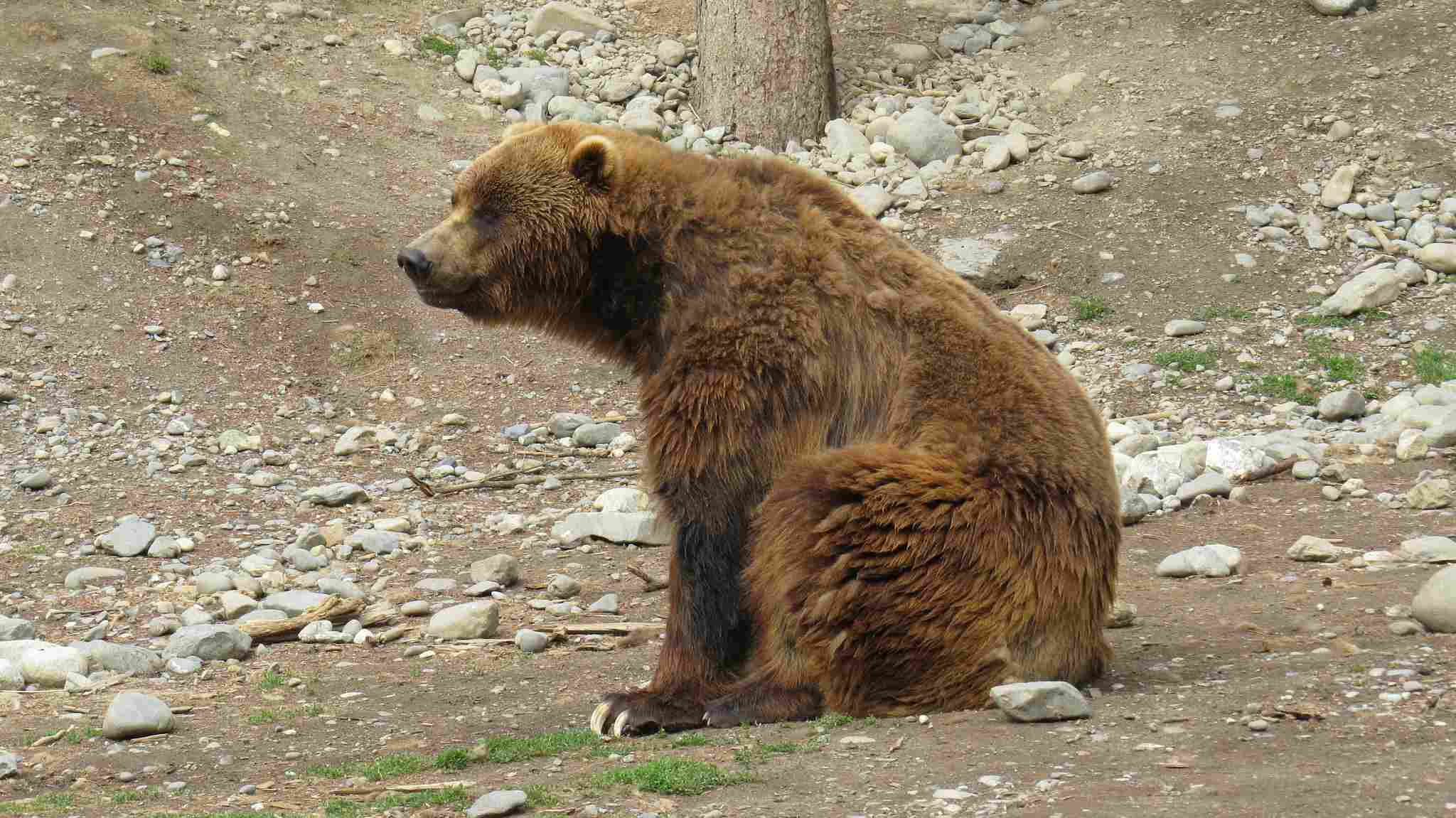
Gorilla:
Live in stable family groups led by a dominant male.
Strong social bonds and communication through vocalizations and body language.
Brown Bear:
Generally solitary, except during mating or when raising cubs.
Social interactions during salmon runs or at feeding sites.
Ecological Implications:
Gorillas’ social structure impacts their habitat use and resource competition.
Brown bears’ interactions affect the distribution of resources and can influence other species in their ecosystem.
16. Mode of Reproduction
Gorilla:
Polygynous mating system with a dominant silverback mating with multiple females.
Gestation period around 8.5 months.
Brown Bear:
Mating occurs during spring and early summer.
Delayed implantation: fertilized eggs don’t implant until the fall.
Ecological Implications:
Gorilla reproductive strategies influence group dynamics and male-male competition.
Brown bears’ timing of reproduction aligns with seasonal food availability, impacting cub survival.
17. Parental Behavior
Gorilla:
Females invest significantly in maternal care.
Silverback provides protection and support to the group.
Brown Bear:
Mothers are highly protective of cubs.
Cubs stay with their mothers for several years, learning essential survival skills.
Ecological Implications:
Gorilla parental behavior contributes to the stability and cohesion of social groups.
Brown bear parental care impacts cub survival rates and the learning of essential skills for independent living.
18. Proximity to Human-Inhabited Areas
Gorilla:
Often found in remote rainforests.
Human encounters less frequent but increasing due to habitat loss.
Brown Bear:
Can be found in various habitats, including proximity to human settlements.
Increased human-bear conflicts in areas with shared habitat.
Ecological Implications:
Gorillas’ remote habitats reduce direct human impacts but face threats from habitat fragmentation and resource extraction.
Brown bears’ proximity to human areas can lead to conflicts, affecting both human and bear populations.
19. Behavior Toward Humans
Gorilla:
Generally shy and avoid human contact.
May display defensive behaviors if threatened.
Brown Bear:
Responses vary; some bears avoid humans, while others may approach out of curiosity.
Can exhibit defensive or aggressive behavior if they feel threatened.
Ecological Implications:
Gorillas’ avoidance of humans is essential for their conservation, minimizing potential conflicts.
Brown bears’ varied responses can impact their survival, depending on human-bear interactions.
20. Danger Posed to Humans
Gorilla:
Rarely pose a direct threat; attacks are usually defensive.
Wild gorillas typically avoid confrontation with humans.
Brown Bear:
Can pose a danger, especially if surprised or protecting cubs.
Attacks are infrequent, but encounters require caution.
Ecological Implications:
Gorillas’ low threat to humans supports coexistence, contributing to conservation efforts.
Brown bears’ potential danger underscores the importance of proper education and management to mitigate conflicts.
21. Associated Precautions
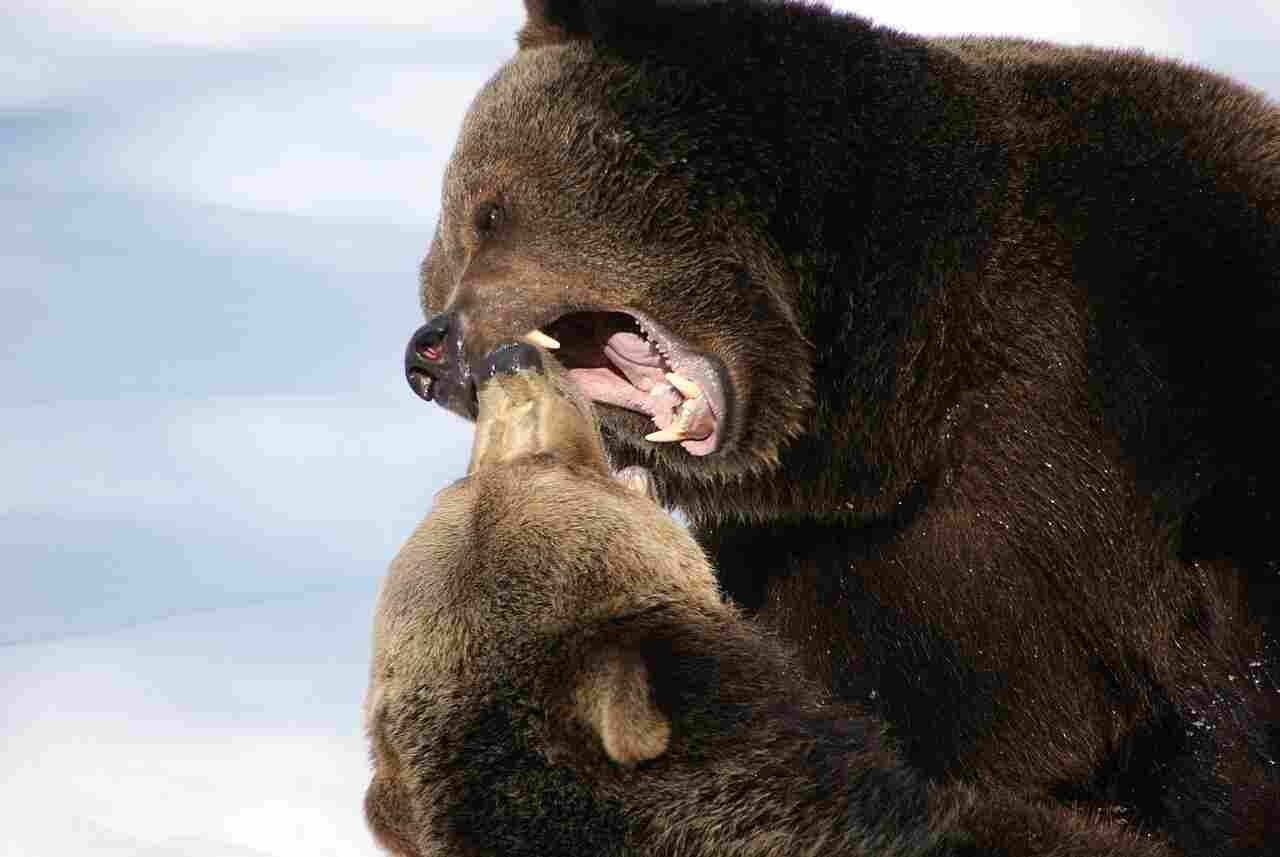
Gorilla:
Maintain respectful distances in the wild.
Follow guidelines for gorilla trekking to minimize disturbance.
Brown Bear:
Carry bear spray and know how to use it in bear country.
Proper food storage and awareness of bear behavior reduce risks.
Ecological Implications:
Implementing precautions for both species helps promote coexistence, ensuring the safety of both humans and the animals.
22. Conservation Status
Gorilla:
Eastern gorilla (G. beringei) is listed as Endangered.
Western gorilla (G. gorilla) is listed as Critically Endangered.
Threats include habitat loss, poaching, and disease.
Brown Bear:
Various subspecies have different conservation statuses.
Generally, some populations are of least concern, while others, like the grizzly bear, face threats.
Threats include habitat loss, poaching, and human-bear conflicts.
Ecological Implications:
Gorilla conservation efforts are crucial to maintaining biodiversity in African rainforests.
Brown bear conservation contributes to the health of ecosystems and helps prevent imbalances caused by the decline of a keystone species.
Summary of Comparison
Taxonomy:
Gorilla: Order Primates, Family Hominidae, Genus Gorilla, Species G. beringei, G. gorilla.
Brown Bear: Order Carnivora, Family Ursidae, Genus Ursus, Species Ursus arctos.
Appearance:
Gorilla: Robust build, dark hair, sagittal crest in males.
Brown Bear: Stocky build, varied fur colors, concave face.
Size:
Gorilla: Males 5.6-5.9ft (standing height).
Brown Bear: Varies by subspecies, Grizzlies around 6.5ft.
Weight:
Gorilla: Males 300-400lbs, Females smaller.
Brown Bear: Varies by subspecies, Grizzlies 300-1500lbs.
Bite Force:
Gorilla: Estimated ~1300 psi.
Brown Bear: Strong, exact measurement varies.
Offensive Advantages:
Gorilla: Powerful arms, sharp canines.
Brown Bear: Strong forelimbs, sharp claws, good swimmers.
Defensive Advantages:
Gorilla: Physique, climbing ability.
Brown Bear: Robust build, standing on hind legs.
Speed:
Gorilla: Limited ground speed, approximately 20 mph.
Brown Bear: Up to 30 mph.
Agility:
Gorilla: Agile climbers, display agility socially.
Brown Bear: Agile for size, navigate varied terrains.
Overall Physical Capacity:
Gorilla: Ground and tree movement, strong muscles.
Brown Bear: Versatile, adept at swimming, digging.
Habitat Preference(s):
Gorilla: Tropical and subtropical forests.
Brown Bear: Various habitats, adaptable.
Tracks:
Gorilla: Hand & footprints, opposable thumb visible.
Brown Bear: Large paw prints, distinct claw marks.
Lifespan:
Gorilla: 35-40 years in the wild.
Brown Bear: Varies (20-30 years), by species and habitat.
Mode of Feeding:
Gorilla: Primarily herbivorous, occasional insects.
Brown Bear: Omnivorous, opportunistic feeding.
Social Behavior:
Gorilla: Live in stable family groups.
Brown Bear: Generally solitary, social during mating.
Mode of Reproduction:
Gorilla: Polygynous mating, ~8.5 months gestation.
Brown Bear: Mating in spring, delayed implantation.
Parental Behavior:
Gorilla: Maternal care, silverback protection.
Brown Bear: Highly protective mothers, cubs stay for years.
Proximity to Human-Inhabited Areas:
Gorilla: Often remote areas.
Brown Bear: Various habitats, proximity to settlements.
Behavior Toward Humans:
Gorilla: Generally shy, defensive behavior.
Brown Bear: Responses vary, may approach or avoid.
Danger Posed to Humans:
Gorilla: Rarely pose a direct threat.
Brown Bear: Can pose a danger, especially if surprised.
Associated Precautions:
Gorilla: Maintain respectful distance, follow guidelines.
Brown Bear: Carry bear spray, proper food storage.
Conservation Status:
Gorilla: Endangered (Eastern), Critically Endangered (Western).
Brown Bear: Varies by subspecies, some populations least concern.
Ecological Implications:
Gorilla: Impact on rainforest biodiversity.
Brown Bear: Role in diverse habitats, potential conflicts.
Conclusion
I). Similarities
Both gorillas and brown bears play vital roles in maintaining ecological balance within their respective habitats.
Conservation efforts are essential for the survival of these species due to shared threats, including habitat loss and poaching.
II). Differences
Gorillas are primates adapted to arboreal and terrestrial life in African rainforests, emphasizing social structures.
Brown bears are versatile omnivores with a wide distribution, facing varied challenges in different habitats, including human-bear conflicts.
